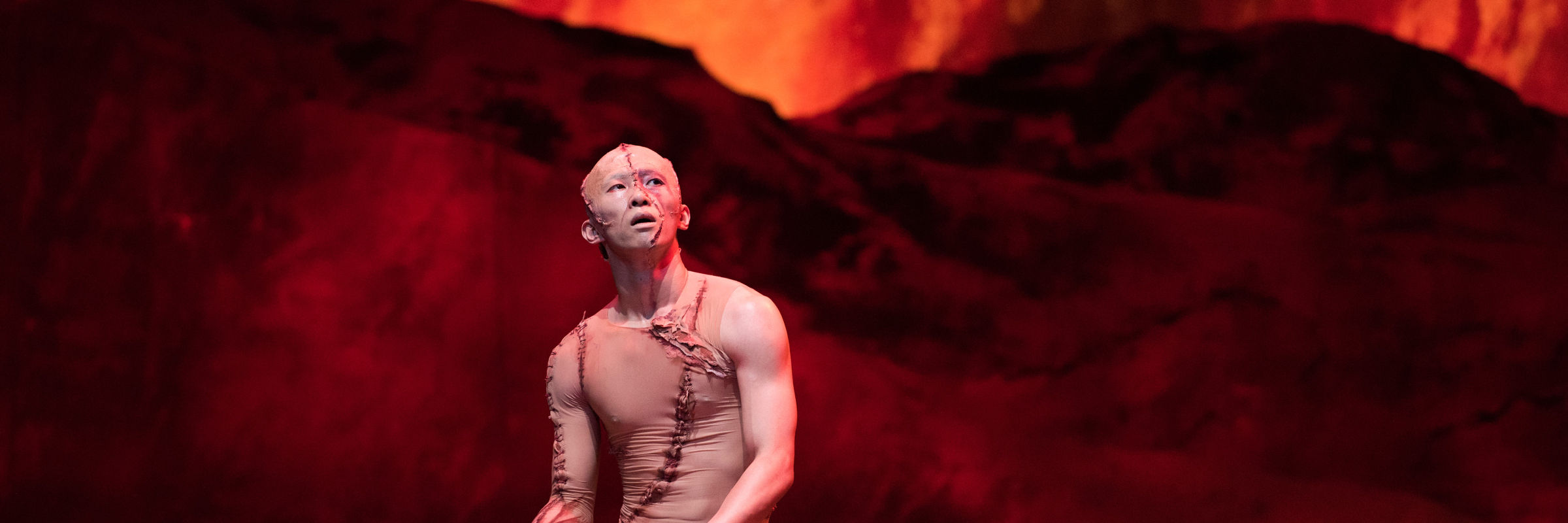Exploring Humanity Through Dance
Wei Wang on Portraying the Creature in Frankenstein
The Creature in Mary Shelley’s Frankenstein is a complex figure embodying both innocence and malevolence. Created by Victor Frankenstein through an unholy scientific experiment, the Creature is initially benevolent, curious, and eager for human connection. However, society’s rejection, coupled with Victor’s abandonment, drives him into isolation and despair. This profound loneliness transforms his innocence into rage. Despite it all, the Creature remains deeply introspective, wrestling with his existence and yearning for acceptance, making him both a tragic victim and a symbol of the dangers of unchecked ambition and social alienation. We sat down with Principal Dancer, Wei Wang, for a deeper understanding of his interpretation of this complex role.

What emotion is at the heart of the Creature’s actions?
Wei Wang: The Creature not only wants love and acceptance. He’s seeking a common ground, just like any human would. In human nature, we want common understandings with one another. We want to be told we’re doing the right thing, but it doesn’t always happen. It’s the cruel nature of it.
When I dance the role of the Creature, there’s so much going on to make up the character. The most relevant feeling in this ballet for me is self-discovery. The Creature is trying to find answers for himself and find out why he’s not loved and left behind by his creator and society.
This is the third time I’m doing this role. This role carries a big weight in my dance career because it shifted my artistry and how I see dance and tell stories through dance. Dance is not just a tool for me anymore, it’s about storytelling and a way of connecting with other dancers and the audience.
How do you tap into the character of the creature?
Wei Wang: I approach the role of the Creature as a regular human being who maybe has a different look, a different back story, or who came from a different place.
By the time the two hours in the makeup chair finishes, the final result takes your breath away…the makeup gives a sense of vulnerability and sense of disconnection from the real world. The first time seeing myself in the makeup, I knew that this would take me on a journey.
As an artist, it has a bit of vulnerability but that’s the important thing about this character. You want people to see and connect to that, so the audience sees that not only has Victor Frankenstein created a scary creature, but that this Creature is so vulnerable like a newborn baby that was abandoned and treated so badly by society, and the nature of that. It’s emotionally very heavy.

Where do you draw inspiration for your interpretation of the choreography?
Wei Wang: My inspiration for the creation scene is the zombies from the Walking Dead, or any classic zombie movie where they’re coming up from the soil. Another visual inspiration for this role was that I was told to study the stage play of Frankenstein, which became an inspiration for me to build this character. I studied the way he moves, the way he interacts with other characters.
When we were working with Liam in the studio, he would show 90% of the movement himself, so we learned so much just watching him doing it. Liam was really the biggest inspiration for me…he taught us that every step counts and there isn’t one wasteful movement in this ballet.
Wei Wang will dance the role of the Creature this season. Liam Scarlett’s Frankenstein is onstage MAR 20–26 and APR 26–MAY 4








